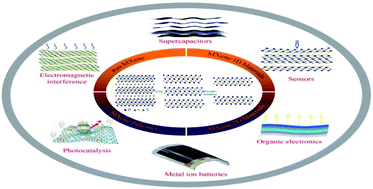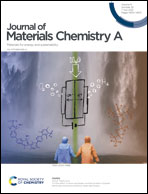Recent advances in 2D MXenes: preparation, intercalation and applications in flexible devices
Abstract
Due to their distinctive two-dimensional (2D) structure and excellent properties, MXenes have got much attention and developed very fast since their discovery in 2011. Generally, 2D MXenes are prepared by selectively etching the A layer from the MAX phases with hazardous fluorine-based acids. Later, more and more moderate routes, such as Lewis acid etching and chemical vapor deposition, have been successfully developed to prepare 2D MXenes without using hazardous etchants. Meanwhile, the intercalation or delamination is also quite important to obtain 2D MXene layers with high quality and high yield. Furthermore, due to the outstanding optoelectronic properties, flexibility, ductility and stability, flexible devices based on 2D MXenes and their nano-composites are quite promising in different fields, such as organic electronics, supercapacitors, metal-ion batteries, electromagnetic interference shielding, sensors, photocatalysis and photothermal therapies, etc. In this review, we firstly summarize the recent development and progress in the preparation of 2D MXenes from chemical and physical routes, as well as the intercalation and delamination techniques including cation intercalation and physical delamination. Furthermore, the applications of 2D MXene in flexible devices have been well discussed from different using routes of MXene including pure MXene, MXene/2D materials, MXene/1D materials and MXene/polymers. Finally, we give a conclusion to this interview and make a perspective on the future directions of 2D MXenes considering the key issues in the MXene community.

- This article is part of the themed collection: Journal of Materials Chemistry A Recent Review Articles


 Please wait while we load your content...
Please wait while we load your content...